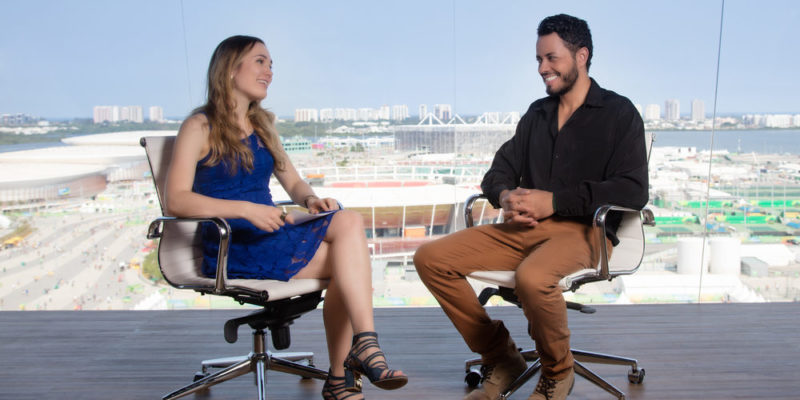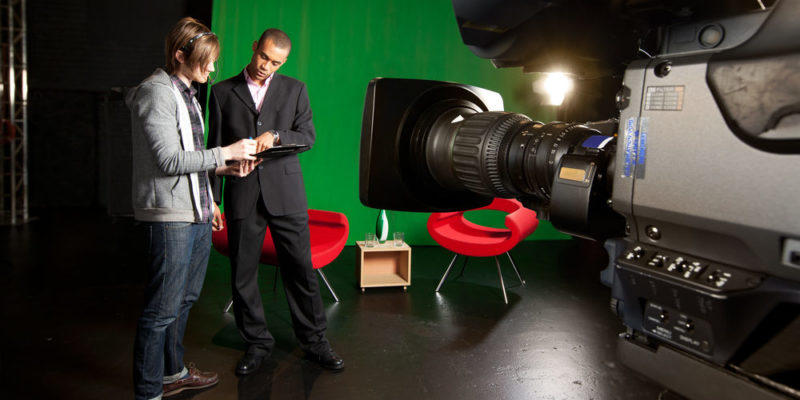We explain what an interview is and the areas in which it can be developed. Also, how it is classified and its main characteristics.
What is an interview?
An interview, broadly speaking, is a meeting fixed in advance between two people and in which an exchange of information takes place between them. Unlike dialogue or simple conversation, the interview pursues a specific purpose and end, which may well point to the evaluation , disclosure or diagnosis of the interviewee.
In this sense, the success of the interview has to do with the previous definition of its objectives , as well as the ability of the interviewer to lead the exchange towards the scenarios that are of interest to them.
In the case of the journalistic interview, the purpose is to gather enough information to make the interviewee known ; in a clinical interview, for diagnosis; and in a job interview , for the job skills of the interviewee.
See also: Informative and opinion genres .
Characteristics of an interview :
- Etymology
The word interview is made up of the Latin terms inter- (between) and videre (to see) . However, the word was born from the French entrevue that could point to “glimpse” (to look through something, look incompletely) or to s’entrevoir (see each other, see each other reciprocally).
See also: Report .
- Interviewer

The role of the interviewer may vary, according to the context, but in broad strokes it points to the conduction of the exchange towards the areas of greatest interest , based on the choice of questions.
Their role, moreover, is complex: the conduction must be effective but discreet , since it is the interviewee who constitutes the focus of the exchange. The interview is normally considered to be the responsibility of the interviewer.
- Interviewed
The interviewee faces what is planned by the interviewer, usually without having notice of the items or questions that constitute the interview. So their participation is usually impromptu, spontaneous , and in that sense, purportedly genuine. This character of veracity or legitimacy is a component that usually accompanies the interview in its various contexts of appearance.
- Scopes

Depending on the specific context of interests, we can name several areas of the interview:
- Clinical interview. The basic type of interview in the medical and medicinal field, in which the health professional observes his patient and tries to arrive at a diagnosis.
- Psychological interview. Similar to the previous one, but from the field of psychology . In it, the need and the work path of a therapeutic process that begins is usually determined.
- Work interview. Pertinent to the industrial or business field, it is the first personnel selection instrument, in which you have direct contact with the potential worker for the first time.
- Journalistic interview. Various types of informative interview are available to the journalist when talking with a personality or a specialist on a subject in question, with the aim of informing or documenting their readers.
- Percentage measurement interview or survey. It is a brief and anonymous interview, which serves as a survey to get a panoramic idea of the opinion of a social sector regarding a specific topic or product.
- Interview types

Regarding, however, the field of journalism and information, it is possible to establish a typology of interviews based on certain elements of its structure:
- Open interview. The one in which the questions asked of the interviewee are broadly interpreted, serve as the basis for him to express an opinion or to reflect.
- Semi-open interview. It combines open or free questions and others with a much more specific response, which can be chosen from a number of options.
- Closed interview. Known mostly as a questionnaire, it is made up of concrete questions that pursue a simple and determined answer, often in a binary scheme (yes or no).
Another possible classification points to the final intention of the journalistic interview, but they can be somewhat arbitrary divisions, if not questionable, between one thing and another:
- Opinion interview. The interviewee expresses his opinions on a topic.
- News interview. Someone is interviewed to piece together the facts of an event.
- personality interview. Also known as a profile, it is carried out to introduce the public to deeper details about the personality and life of the interviewee, who is usually a famous person or an important cultist.
- Massive formats
The interview became popular in modern information transmission media , such as radio and especially TV , since the latter offered the opportunity not only to know what the interviewee thinks, but also to see the way in which he explains it. The same happened with multimedia formats on digital media, such as on the Internet , which can be played over and over again.It may interest you: Digital journalism .
- The Record

The expression ” the record ” was coined from English-speaking journalism as a way to allude to what was said publicly through the interview , and what was said behind the cameras should remain hidden. On the handling that the journalist makes of the information on-the record (public) and off-the record (private), his ethics will depend to a great extent, but even more his relationship with those affected, if said confidential information is revealed.
- The bubble
In the television world, the climate of confidence and relaxation necessary for an interview , which is being monitored and broadcast by several television cameras at the same time , has been baptized as the bubble . Thus, the interviewer must earn the trust of the interviewee and make him or her feel in a bubble: protected by the naturalness of the constant eye of the public and the technical stretches of the communication medium .
- Previous investigation

Given that the dialogue between interviewer and interviewee must flow and be dynamic, the former must have carried out a prior investigation regarding the topic or topics to be addressed. Only in this way will it be up to the benchmarks and successfully sustain a dynamic of interest that will make the interviewee much more collaborative.
- Brackets
The record of what happened in the interview often has technological support in the form of:
- Voice recording devices: digital, tape recorders, etc.
- Make notes in a notebook to highlight certain aspects.
- Multimedia support in case of being television.
- Photographic support to document the event and illustrate the dialogue.
The above content published at Collaborative Research Group is for informational and educational purposes only and has been developed by referring to reliable sources and recommendations from technology experts. We do not have any contact with official entities nor do we intend to replace the information that they emit.














